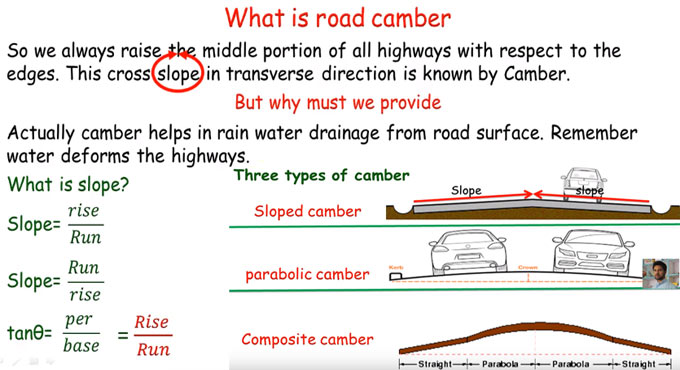NEWS | SOFTWARE | SHEET
Brief overview of Road Cambers and its types
The building footage is going to offer details about the road camber and its sorts. Road camber indicates the incline that is set in transverse way (direction) in expressways (highways).
There’re 3 sorts of road cambers. The sorts are parabolic camber, composite camber and inclined camber.
Camber is helpful for releasing precipitation from road plane (surface) because precipitation could damage the highway. As a result, the centre part of each expressway (highway) is elevated touching the peripheries and it’s known as crown.
The representative sample (cross-section) form of the diagonal or cross gradient could appear in various forms such as straight, curving (curved) or combination of the two.
The cross gradients are set in gradient like one in n or in proportions (percentages) like n percent (like for example, one in fifty or two percent). The arrangement measurements of cambers are mainly according to the pavement sort and on the precipitation standard magnitude in the region.
Generally, slope cambers two to three percent are set. On roads straight parts, supports (shoulders) are set with more cross fall in contrast to that of the carriageway by zero point five percent.
Advantages of camber:
a. Protection of the road plane (surface), particularly for the roads made with bituminous and gravel by releasing the excess water right away.
b. Protection of the sub-grade by organizing appropriate drainage setting.
c. To keep protection, because wet roadway setting are rather undesirable for safe driving.
To learn the entire process, go through the following video tutorial.
Lecturer: SL Khan


